| Links contents
Forum partners
 Aggregates Industries
 Anglian Water
 Bedfordshire and Luton Biodiversity Partnership
 British Trust for Conservation Volunteers
 Broads Authority
 Cambridgeshire and Peterborough Biodiversity Partnership
 The Deer Initiative ( Click here for website)
 East of England Deer Initiative
 East of England Local Records Centres
 Environment Agency
 Essex Biodiversity Project
 Forestry Commission ( Click here for website)
 Hertfordshire Biodiversity Partnership
 Landscape East ( Click here for website)
 National Trust
 Natural England
 Norfolk Biodiversity Partnership
 Plantlife
 RSPB
 Suffolk Biodiversity Partnership
 Woodland Trust ( Click here for website)
Back to the top
LBAPs - Introduction
The East of England has six local biodiversity partnerships that have proved very effective in delivering positive outcomes for biodiversity. As a result of Rio in 1992, and the setting of the original UK Biodiversity Action Plan in 1994, it was recognised that action at the local level was essential. To secure this outcome biodiversity partnerships designed to deliver on the ground were duly set up. Many of these in the East of England date back over ten years.
Role
Local biodiversity partnerships, acting through Local Biodiversity Action Plans (LBAPs), are thus a natural focus to secure the involvement of local stakeholders in biodiversity. They have become a proven mechanism for focusing resources to conserve and enhance nationally and locally important biodiversity. Adoption of this partnership approach enables the pooling of resources, expertise, and the sharing of the workload. In addition opportunities to make the best use of funding sources can be pursued and significant in-kind contributions to projects achieved.
Partnerships' roles may be summarised thus to:
- Translate national targets for species and habitats into effective action at the local level;
- Stimulate effective local partnerships, promoting participation and consensus among a wide range of sectors and stakeholders, to ensure programmes for biodiversity conservation are developed and maintained in the long term;
- Raise awareness of the need for biodiversity conservation and enhancement in the local context;
- Ensure that opportunities for conservation and enhancement of biodiversity are promoted, understood and rooted in policies and decisions at the local level;
- Provide a basis for the monitoring and evaluation of biodiversity action.
Case Studies
To view some examples of work undertaken by local biodiversity partnerships click here.
Additional information about regional LBAPs can be found on their individual websites below .
| Local Biodiversity Action Plan Partnerships: |
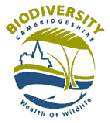
|
The Cambridgeshire & Peterborough Biodiversity Partnership
Through this Partnership a range of public, voluntary and private organisations have come together to seek to better manage, enhance and increase the area of locally distinctive habitats, thereby increasing the numbers of and populations of species found in our area.
The Partnership has successfully established a Biological Records Centre, so that future land use decisions can be made on up-to-date and relevant information. It has also developed a successful Wildlife Sites project that is helping to improve the conservation management of priority habitats by working with and advising landowners. Finally, it has adopted a 50-year vision to restore and create wildlife habitats across Cambridgeshire & Peterborough. Several landscape-scale projects are already up and running, including the Great Fen project, Wicken Fen vision, the West Cambridgeshire Hundreds project and the John Clare Country project. For more information, please visit: http://www.cambridgeshire.gov.uk/
biodiversitypartnership/
Martin Baker – Chair of the Cambridgeshire & Peterborough Biodiversity Partnership |

|
The Essex Biodiversity Project
In 2009 the Essex Biodiversity Project celebrates its first 10 years of delivering advice, support and practical projects to benefit biodiversity within the county. By working closely with partners at a local, regional and national level we are working on increasingly larger scale project that are making a real difference.
For more information, please visit:
http://www.essexbiodiversity.org.uk
Steve Plumb – Chair of the Essex Biodiversity Project |

|
The Hertfordshire Biodiversity Partnership
The Hertfordshire Biodiversity Partnership was created to combine the efforts of a range of organisations concerned with nature conservation and biodiversity issues throughout Hertfordshire. Its primary focus is to ‘drive’ the delivery of the Hertfordshire Biodiversity Action Plan (a 50-year vision for the wildlife and natural habitats of Hertfordshire) and to provide a forum and network for local authorities, voluntary interests and strategic partners.
The Hertfordshire Biodiversity Partnership has been subsumed into the Hertfordshire Local Nature Partnership.
http://www.hef.org.uk/nature/index.htm
Judy Adams – Chair of the Hertfordshire Biodiversity Partnership |

|
The Norfolk Biodiversity Partnership
The Norfolk Biodiversity Partnership seeks to conserve, enhance and restore the county's biological diversity. Established in 1996, the Partnership brings together a total of 21 local authorities, statutory agencies and voluntary groups in pursuit of a shared vision-the implementation of the Norfolk Biodiversity Action Plan.
For more information, please visit:
Homepage - Broads Authority
Andrea Kelly – Chair of the Norfolk Biodiversity Partnership |
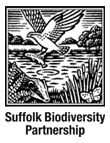
|
The Suffolk Biodiversity Partnership
Partnership working is crucial to the success of delivering the Suffolk Biodiversity Action Plan. A wide range of partners are involved, including Natural England, Suffolk County Council, Suffolk Biological Records Centre, Suffolk Wildlife Trust, many district and borough councils, Environment Agency, Farming and Wildlife Advisory Group, the Countryside Projects and AONBs, Royal Society for the Protection of Birds and the Forestry Commission.
For more information please visit:
http://www.suffolkbiodiversity.org
Peter Holborn – Chair of the Suffolk Biodiversity Partnership |
Back to the top
Local Records Centres - Introduction
The five established Local Records Centres (LRCs) in the East of England are the focus for biological information in this region. All have common goals, namely to collect, manage and interpret wildlife data so that it can be used for the conservation and enhancement of local biodiversity. For a summary leaflet on the LRCs please click here.
Using funding from Defra, during the autumn of 2009 Natural England undertook a regional review of LRCs as part of the Forum's efforts to tackle Challenge 6 of its Delivery Plan. The aim of this exercise was to look at ways to develop the network of local biological recording, as well as the quantity and quality of biological information. The review made a series of recommendations that were implemented through three time-limited projects which have now all come to a close. The projects were as follows.
| Project 1: Improving the data request service for consultants and public bodies. |
| |
|
|
| Objectives: |
|
To improve services provided to consultants;
To improve services provided to Local Authorities and other public bodies;
To develop a regional long term strategy for data provision based on potential future data needs. |
| |
|
Project led by Norfolk Biodiversity Information Service (NBIS). |
| |
|
|
| Project 2: Advocating the need for and the value of LRCs to public bodies and recorders. |
| |
|
|
| Objectives: |
|
To make data providers aware of how data submitted to LRCs in the East of England are managed and how they are used to inform decisions;
To identify present and coming needs of public bodies relating to biodiversity and the products and services that LRCs need to provide to meet them;
To make public bodies in the East of England aware of the availability of products and services from LRCs relating to their biodiversity duties. |
| |
|
Project led by Cambridgeshire and Peterborough Environmental Records Centre (CPERC). |
| |
|
|
| Project 3: Collating baseline biodiversity data for Tendring District, Essex. |
| |
|
|
| Objectives: |
|
To demonstrate to the local authorities in Essex the benefits of contributing to the Biological Records Initiative for Essex (BRIE).
To highlight the value of BRIE to local authority planning departments, and other potential users of biodiversity data in the county. |
| |
|
Project led by BRIE. |
| |
|
|
| The projects have led to developments in the way the LRCs operate and collaborate with each other. If you would like further information the final reports and appendices for Projects 1 and 2 can be downloaded from here.
|
| There is no final report available for Project 3. |
A Standard Data Enquiry Service
Launched by NBIS and the other LRCs in the East of England in April 2011, the Standard Data Enquiry Service marks the culmination of Project 1, to improve and introduce consistency to the content and format of information provided to LRC users. The new service will particularly benefit environmental consultants working across the region.
The Standard Data Enquiry Service was developed in close collaboration with LRCs and key users, particularly focussing on ecological consultants. Features include standardising what data are provided, the format and timescale in which they are provided and the provision of metadata to inform users of the quality and coverage of the information held.
The new service developed covers Bedfordshire & Luton, Cambridgeshire & Peterborough, Hertfordshire, Norfolk and Suffolk, and will also include Essex once the LRC there is established.
To view what the Standard Data Enquiry Service contains please click here.
Back to the top
| Local Record Centres: |

|
Bedfordshire & Luton Biodiversity Recording & Monitoring Centre
c/o The Wildlife Trust, Priory Country Park Visitor Centre, Barkers Lane, Bedford MK41 9DJ
01234 355435; www.bedsbionet.org.uk; brmc@bedsbionet.org.uk |

|
Cambridgeshire & Peterborough Environmental Records Centre
The Manor House, Broad Street, Great Cambourne CB23 6DH
01954 713570;
www.cperc.org.uk data@cperc.org.uk |

|
Herts Environmental Records Centre (HERC)
Grebe House, St Michael's Street, St Albans AL3 4SN
01727 732 767
enquiries@hercinfo.org.uk
www.hercinfo.org.uk |

|
Norfolk Biodiversity Information Service
County Hall, Norwich NR1 2SG
01603 224458;
www.nbis.org.uk; nbis@norfolk.gov.uk |

|
Suffolk Biological Records Centre
Ipswich Museum, High Street, Ipswich IP31 3QH
01473 433547; www.suffolkbrc.org.uk/
; martin.sanford@suffolk.gov.uk |
Back to the top |
 |


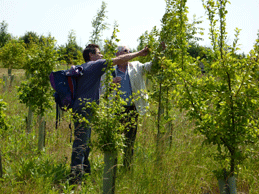

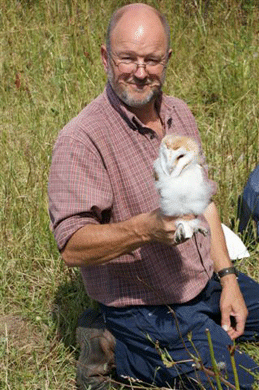

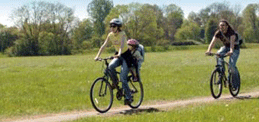

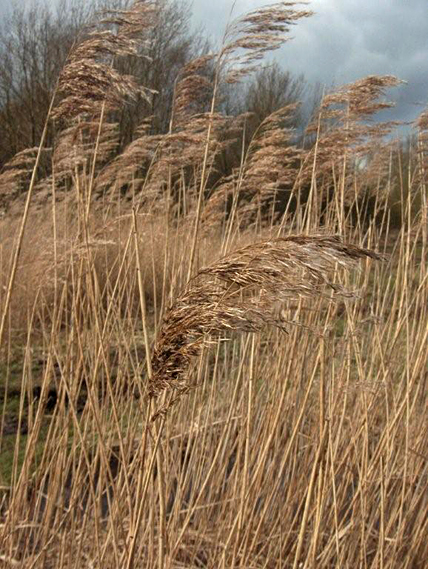

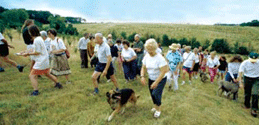
|


